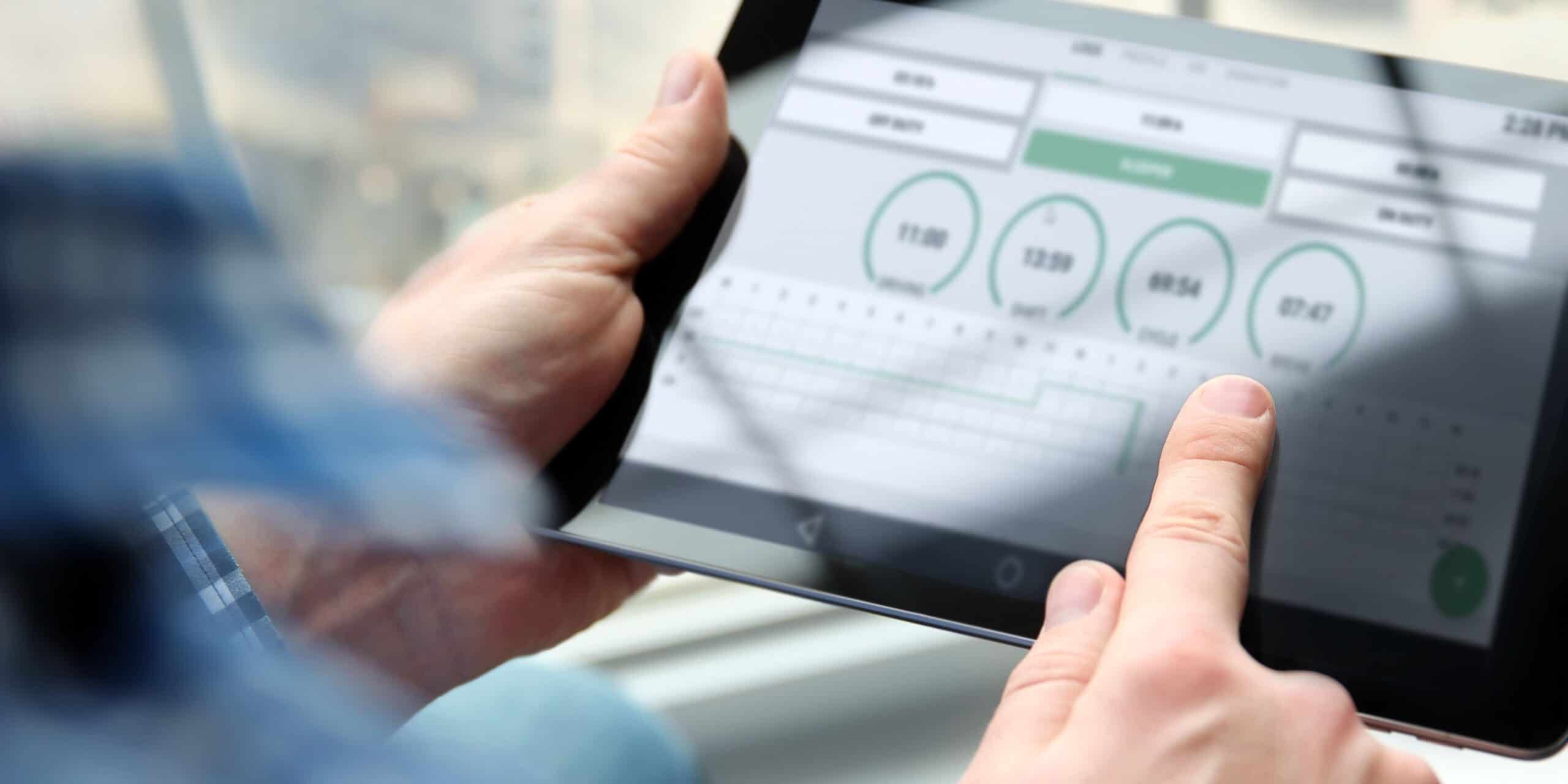Electronic logging devices (ELD) are used on commercial trucks that operate at distances of 100 miles or more from their companies’ headquarters.
ELDs allow for digital tracking to automate formerly manual procedures, such as using record of duty status (RoDS) or hours of service (HOS) logbooks. While there’s nothing inherently wrong with using logbooks, drivers can forget to check them, make mistakes or even falsify information.
With real-time ELD data transmission, there’s no possibility of a drowsy driver, for instance, recording the wrong date and time. This ensures that a business can keep track of its trucks and shipments for optimal load visibility.
What is load visibility?
Load visibility refers to the ability to track shipments. Thanks to the real-time tracking capabilities of ELDs, truck loads are visible to all parties in the supply chain. Shippers, carriers, 3PLs, suppliers and customers can log into an app or user portal and see precise shipment locations.
How does load visibility work?
Load visibility is only possible with reliable and constant data. Relying on cellular networks, ELDs are able to constantly transmit relevant information to various apps and portals. Each member of a supply chain can see the information that’s most important to them.
For example:
- Shippers can see where drivers are and how well they’re driving
- Customers can see where shipments are and when they’ll arrive
- Manufacturers and suppliers can ensure products are handled safely
Even when trucks drive through poor coverage areas, ELDs still collect data for transmission when reception improves.
Why should ELDs be involved in load visibility?
Since ELDs plug into onboard diagnostics (OBD) ports, they can monitor fuel use, lateral Gs and average speeds, among other metrics.
ELDs also serve to keep everyone involved in shipments honest. Because they’re constantly transmitting and storing data, they can be used to investigate delivery issues or in-transit collisions.
Load visibility could also conceivably be achieved by tracking drivers’ mobile phones, but that approach introduces potential issues. For one, it raises ethical and privacy concerns, particularly if a driver relies on a personal cell phone. Unless drivers are willing to use employer-provided phones, their devices may not be reliable enough for effective load visibility. Finally, mobile phones don’t plug into OBDs, so they can’t monitor vehicles’ functional metrics.
4 ways ELDs provide load visibility
Visibility is essential for everyone involved in a shipment, and no truck should be invisible to the supply chain. Here are four ways ELDs provide load visibility.
ELD-based digital load tracking
By providing GPS location tracking, ELDs allow everyone in a supply chain to determine better routes and more efficient practices. Manual logging is replaced by recordings of driven routes. With ELDs, owners can track trucks and not worry about driver privacy concerns. ELDs don’t record driver-specific information; when drivers exit their trucks, the devices don’t record anything they do.
Using integrations
There are one-click ELD integrations that make setup for tracking quick and seamless. And because an ELD integrates with trucks via OBD ports, they’re capable of monitoring vehicle health. Owners can see if trucks need oil changes or other routine maintenance, and know whether there are any major mechanical issues.
In the future, AI and other technologies will allow for more control over trucks. Operational advances like automated lights and increased driver assistance will make trucks even safer.
Automation for hours of operation and driver check-ins
The technology of an ELD protects drivers and works around forgetfulness and human error. Increasing operational automation reduces the need for drivers to remember to write times in a log or check in when they’ve reached a destination. ELD tracking also ensures that drivers aren’t driving more hours than they’re allotted.
While their main function isn’t to trap dishonest drivers, it’s certainly a feature. The vast majority of drivers will never see ELD data used against them. They actually help them by offering proof of safe operating practices when issues arise.
Real-time data
Via cell networks, ELDs constantly communicate with companies’ headquarters. There’s no gap in reporting or moments when drivers go silent. Supply chain partners can physically see where shipments are on-screen, moving across maps at actual speeds.
Advantages of increased load visibility
ELDs have transformed trucking for the better in the following ways:
- Enabling supply chain partners to better optimize deliveries
- Automatically recording safety-related operational data
- Providing vehicle health information
- Offering up-to-date ETA insights
- Eliminating human error in RoDS logs
ELDs are here to stay
Most trucks in the U.S. require ELDs, so it’s safe to say they’ll be around for the foreseeable future. And since they protect shipments, supply chain participants and drivers, no one is likely to complain. As for whether your company needs to use them, the answer is probably yes. In fact, the Federal Motor Carrier Safety Administration mandated that trucking carriers finish installing them by the end of 2017.
ELDs have made truck deliveries safer, kept drivers from staying on the road too long and provided much-needed visibility to load and freight transport.
FAQ
Freight transported more than 100 miles from a truck’s headquarters qualifies as an ELD load.
There are some exceptions to the ELD mandate. Pre-2000 vehicles, many tow-away operations, drivers using paper RoDSs no more than eight out of 30 days, and some short hauls may qualify as exceptions.
The FMCSA requires most trucks to use ELDs for freight transport monitoring. The requirement began in 2017, and as of December 2019, all carriers must have ELDs in their commercial motor vehicles (CMVs).



